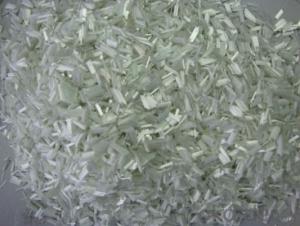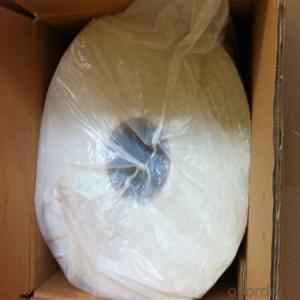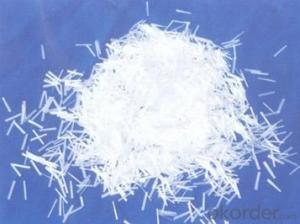E-glass Fiber Chopped Strands For BMC Usage
- Loading Port:
- Shanghai
- Payment Terms:
- TT or LC
- Min Order Qty:
- 20000 kg
- Supply Capability:
- 200000 kg/month
OKorder Service Pledge
OKorder Financial Service
You Might Also Like
DESCRIPTION:
E Glass Fiber Chopped Strands for BMC Usage are compatible with unsaturated polyester, epoxy resin and phenolic resins.
The end-use applications include transportation, building & construction, electronic & electrical, mechanical, and light industry.
Product Features:
Extremely low resin demand, delivering low viscosity to BMC paste
High impact strength; High LOI rate
High strand stiffness; Compatible with rubber
Product Specifications:
Property | Fibre diameter | Moisture Content | Size Content | Chop |
(%) | (%) | (%) | (%) | |
Mathods | IS01888 | ISO3344 | ISO1887 | |
3mm | ±10 | ≤3.0 | 0.1±0.05 | 98 |
6mm | ||||
9mm | ||||
12mm |
Special specification can be produce according to customer requirements.
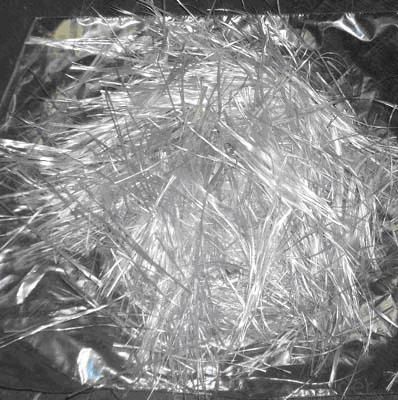
Packaging:
Each bag can be taken (15-25kgs)。 Could also take a big container bag.
Storage:
Unless otherwise specified, It should be stored in a dry, cool and rain-proof area. It is recommended that the room temperature and humidity should be always maintained at 15℃~35℃ and 35%~65% respectively.
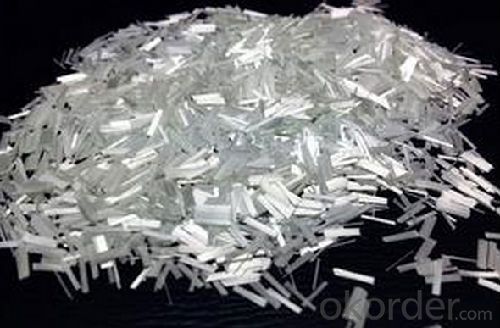
FAQ
1..Is your company a factory or trade company?
A:We have our own factory , we are on this business more than 10 years.
2.Who will pay for the express cost ?
A: We can support you free samples ,but express cost will be paid by you .
3.How long is the delivery time?
A:within 10-15 days after receiving deposit.
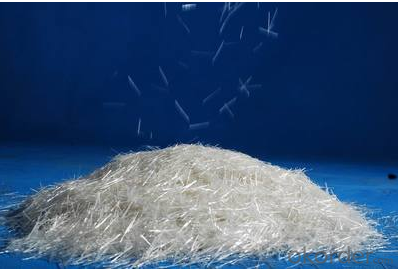
- Q:Can fiberglass chopped strand be used in chemical process equipment?
- Yes, fiberglass chopped strand can be used in chemical process equipment. Fiberglass is known for its excellent corrosion resistance and durability, making it suitable for various chemical applications. Chopped strand is a form of fiberglass reinforcement that consists of short strands of glass fibers. It can be used to reinforce and strengthen components in chemical process equipment, such as tanks, pipes, and vessels. The chopped strand is typically mixed with a resin and applied to the surface or molded into the desired shape, providing added strength and resistance to chemical degradation. Additionally, fiberglass chopped strand is lightweight, cost-effective, and offers good thermal insulation properties, making it a popular choice for chemical process equipment.
- Q:How does the chemical resistance of the chopped strand affect its performance?
- The performance of the chopped strand is heavily influenced by its chemical resistance. Chopped strands are commonly utilized as reinforcements in composite materials, like fiberglass, to enhance their durability and strength. These materials often come into contact with different chemicals, including acids, alkalis, solvents, and corrosive substances. The chemical resistance of the chopped strand refers to its ability to endure the harmful effects of these chemicals over time. If the chopped strand exhibits good chemical resistance, it will be capable of maintaining its physical properties and integrity when exposed to harsh chemical environments. This implies that it will not experience considerable degradation, weakening, or performance loss upon contact with these chemicals. Conversely, if the chopped strand has poor chemical resistance, it may deteriorate, swell, or even dissolve when exposed to specific chemicals. This can result in a reduction in strength, stiffness, and other mechanical properties, ultimately impacting the overall performance of the composite material. Hence, it is desirable to have a high level of chemical resistance in the chopped strand to ensure that the composite material retains its structural integrity and performance in chemical environments. This allows the material to withstand exposure to various chemicals without suffering significant damage or property loss. Consequently, it becomes suitable for a wider range of applications and prolongs its service life.
- Q:How is the interlaminar shear strength of fiberglass chopped strand composites determined?
- Fiberglass chopped strand composites undergo assessment of their interlaminar shear strength using a standardized testing technique known as the short beam shear (SBS) test. This test has been specifically devised to gauge the shear strength existing between the layers of laminated composites. The SBS test necessitates the production of a small beam specimen from the fiberglass chopped strand composite material. Typically, this specimen takes on a rectangular shape with specified dimensions in terms of width, thickness, and length. The width and thickness are selected based on the particular requirements of the material under examination. During the test, the specimen is positioned on two supports, thereby creating a span. At the midpoint of this span, a load is applied, causing the specimen to bend. This bending action engenders shear stresses within the composite material. By measuring the load applied and the resulting deflection, the interlaminar shear strength can be determined by employing the principles of mechanics. The interlaminar shear strength is typically portrayed as the maximum shear stress the material can endure until failure occurs. This property holds great significance in evaluating the integrity and performance of fiberglass chopped strand composites, as it ascertains the material's resistance to delamination or separation between layers. The SBS test is extensively employed within the industry for the purpose of quality control, material selection, as well as research and development endeavors. It furnishes valuable information pertaining to the interlaminar shear strength of fiberglass chopped strand composites, aiding engineers and manufacturers in making well-informed decisions concerning the appropriateness of the material for specific applications.
- Q:How is the fatigue resistance of fiberglass chopped strand composites tested?
- The fatigue resistance of fiberglass chopped strand composites is tested using a variety of methods, including cyclic loading tests and dynamic mechanical analysis. In cyclic loading tests, the composite material is subjected to repeated cycles of loading and unloading, simulating the real-life conditions it may experience during its intended application. The specific loading conditions, such as the magnitude and frequency of the applied loads, are determined based on the anticipated usage of the composite material. The number of cycles required to cause failure or a significant decrease in mechanical properties is recorded, and this information is used to evaluate the fatigue resistance of the material. Dynamic mechanical analysis (DMA) is another commonly used method for testing the fatigue resistance of fiberglass chopped strand composites. DMA involves subjecting the material to a sinusoidal oscillating stress or strain, while simultaneously measuring the resulting strain or stress response. This technique provides valuable data on the viscoelastic behavior of the material under cyclic loading conditions, allowing for the assessment of its fatigue resistance. Additionally, other nondestructive testing methods, such as acoustic emission and ultrasonic inspection, can be employed to monitor any internal damage or degradation occurring within the composite material during fatigue testing. These techniques help identify the specific failure mechanisms and provide insights into the material's fatigue performance. Overall, the fatigue resistance of fiberglass chopped strand composites is evaluated through a combination of cyclic loading tests, dynamic mechanical analysis, and nondestructive testing methods to ensure the reliability and durability of the material in real-world applications.
- Q:Can fiberglass chopped strand be used in the production of insulation blankets?
- Yes, fiberglass chopped strand can be used in the production of insulation blankets. It is a common material choice due to its excellent thermal insulation properties and its ability to withstand high temperatures. The chopped strands are typically layered and compressed to create a dense and effective insulation blanket.
- Q:What are the typical fiber lengths used in fiberglass chopped strand?
- Depending on the specific application and requirements, the typical lengths of fibers used in fiberglass chopped strand can vary. However, it is most common for the fibers to range from 3-6 mm (1/8-1/4 inch). These shorter fiber lengths are preferred because they disperse and distribute better within the resin matrix, resulting in improved overall strength and performance of the fiberglass composite. Additionally, shorter fibers help prevent entanglement and clumping during processing. It is worth noting that longer fiber lengths can also be used in specialized applications where increased strength or specific properties are desired. Ultimately, the choice of fiber length in fiberglass chopped strand depends on the specific needs and characteristics of the intended end use.
- Q:Can fiberglass chopped strand be used in the production of decorative items?
- Yes, fiberglass chopped strand can be used in the production of decorative items. Fiberglass chopped strand is a versatile material that can be easily molded into various shapes and sizes, making it ideal for creating decorative items. It is commonly used in the production of decorative objects such as figurines, sculptures, vases, and other aesthetically pleasing items. The chopped strand can be mixed with a resin or binder, and then molded or cast into the desired shape. It offers excellent strength and durability, making it suitable for long-lasting decorative pieces. Additionally, fiberglass chopped strand can be easily colored or painted, allowing for endless design possibilities. Overall, fiberglass chopped strand is a popular choice for manufacturers looking to produce decorative items that are not only visually appealing but also strong and durable.
- Q:Does the manufacturing process of fiberglass chopped strand involve any hazardous chemicals?
- Yes, the manufacturing process of fiberglass chopped strand does involve the use of hazardous chemicals. Fiberglass is made by melting glass and then extruding it through very fine holes to create thin fibers. During this process, chemicals such as boron, lead, arsenic, and formaldehyde may be used. These chemicals are hazardous and can pose health risks to workers if proper safety measures are not followed. Therefore, it is crucial for manufacturers to comply with occupational health and safety regulations to ensure the protection of workers and the environment.
- Q:What are the typical fatigue properties of fiberglass chopped strand composites?
- Various factors, such as the type of resin matrix, fiber orientation, and manufacturing process, influence the typical fatigue properties of fiberglass chopped strand composites. However, when compared to other materials, these composites generally exhibit favorable fatigue resistance. The type of resin matrix used is a crucial factor in determining the fatigue properties of fiberglass chopped strand composites. Resin systems with different characteristics can greatly impact the composite's fatigue life. Epoxy resins, which are commonly utilized in fiberglass composites, are known for their good fatigue resistance and ability to provide long-lasting performance under cyclic loading conditions. Fiber orientation is another critical aspect that affects the fatigue properties of these composites. The arrangement of the chopped fibers within the matrix can influence the composite's fatigue strength and durability. Typically, composites with aligned fibers demonstrate higher fatigue strength compared to those with randomly oriented fibers. Furthermore, the manufacturing process employed also plays a role in determining the fatigue properties. Factors like the volume fraction of fibers, curing conditions, and manufacturing defects can impact the composite's fatigue behavior. Employing proper manufacturing techniques, such as controlling fiber content and minimizing defects, can enhance the fatigue resistance of fiberglass chopped strand composites. In general, fiberglass chopped strand composites demonstrate good fatigue properties. They are renowned for their high strength-to-weight ratio, excellent resistance to cyclic loading, and ability to withstand repeated stress. These properties make them suitable for various industries, including aerospace, automotive, marine, and sporting goods. However, accurately determining the fatigue properties of a specific fiberglass chopped strand composite requires considering the specific resin, fiber orientation, and manufacturing process involved.
- Q:Can fiberglass chopped strand be used in the manufacture of pipes and tanks?
- Indeed, pipes and tanks can utilize fiberglass chopped strand for their production. This particular reinforcing material is crafted from delicate glass fibers that have been cut into shorter lengths. By combining these chopped strands with a resin matrix, a composite material is formed that possesses strength, lightness, and resistance to corrosion. Throughout the manufacturing procedure of pipes and tanks, fiberglass chopped strand can be employed as a reinforcement layer to bolster the overall structural integrity of the end product. It enhances tensile and flexural strength while improving dimensional stability, making it the perfect material for applications that require longevity and durability. Moreover, fiberglass chopped strand exhibits remarkable resistance to chemicals, moisture, and environmental elements. This renders it suitable for pipes and tanks that will be exposed to harsh conditions or corrosive substances, particularly in industrial environments or underground installations. Additionally, fiberglass chopped strand can be effortlessly molded into various shapes and sizes, granting flexibility in design and customization options. It can be utilized in both filament winding and hand lay-up processes, allowing compatibility with different manufacturing techniques. All in all, utilizing fiberglass chopped strand in the production of pipes and tanks provides numerous advantages, such as increased strength, corrosion resistance, and design versatility. It is a dependable and cost-effective solution for creating durable and high-performing products across various industries.
1. Manufacturer Overview |
|
|---|---|
| Location | |
| Year Established | |
| Annual Output Value | |
| Main Markets | |
| Company Certifications | |
2. Manufacturer Certificates |
|
|---|---|
| a) Certification Name | |
| Range | |
| Reference | |
| Validity Period | |
3. Manufacturer Capability |
|
|---|---|
| a)Trade Capacity | |
| Nearest Port | |
| Export Percentage | |
| No.of Employees in Trade Department | |
| Language Spoken: | |
| b)Factory Information | |
| Factory Size: | |
| No. of Production Lines | |
| Contract Manufacturing | |
| Product Price Range | |
Send your message to us
E-glass Fiber Chopped Strands For BMC Usage
- Loading Port:
- Shanghai
- Payment Terms:
- TT or LC
- Min Order Qty:
- 20000 kg
- Supply Capability:
- 200000 kg/month
OKorder Service Pledge
OKorder Financial Service
Similar products
New products
Hot products
Related keywords


